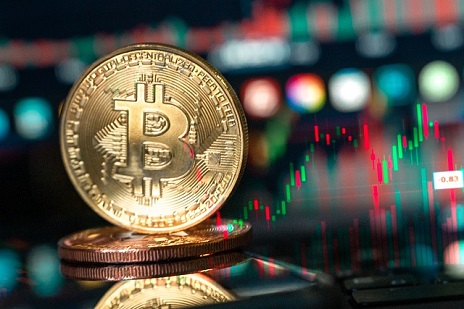Kitco News
Share this article:
Editor’s Note: With so much market volatility, stay on top of daily news! Get caught up in minutes with our speedy summary of today’s must-read news and expert opinions. Sign up here!  (Kitco News) – The volume of crypto traded on exchanges has long been a controversial statistic as it’s a well-known fact that a significant amount of wash trading occurs every day to help make the sector look more active than it is.
(Kitco News) – The volume of crypto traded on exchanges has long been a controversial statistic as it’s a well-known fact that a significant amount of wash trading occurs every day to help make the sector look more active than it is.
Despite the uptick in global adoption and increased awareness that the crypto ecosystem has gained in recent years, a new report from Forbes shows that 51% of all reported trade volume should be considered fake volume, a sign that wash trading remains highly prevalent.
According to the U.S. Commodity Futures Trading Commission, wash trading is defined as “Entering into, or purporting to enter into, transactions to give the appearance that purchases and sales have been made, without incurring market risk or changing the trader’s market position.” Wash trading is illegal based on the text of The Commodity Exchange Act.
In its investigation, Forbes analyzed trading volume data from 157 cryptocurrency exchanges and determined that “More than half of all reported trading volume is likely to be fake or non-economic.”
The business magazine estimated that Bitcoin’s (BTC) global daily volume for the industry was $128 billion on June 14, which was “51% less than the $262 billion one would get by taking the sum of self-reported volume from multiple sources.”
Forbes also noted that “there is no universally accepted method for calculating the Bitcoin daily volume,” so all figures used should be considered as the best estimates possible based on the available data.
Based on the investigation’s findings, “21 crypto exchanges generate $1 billion or more in daily trading activity, while the next 33 exchanges had volume between $200 million and $999 million across all contract types, spot, futures and perpetuals.”
The cryptocurrency exchange Binance is the dominant player on the world stage when it comes to Bitcoin trading, with a 27% market share, followed by FTX. In the world of Bitcoin futures trading, the Chicago-based CME Group is the market leader.
The biggest issue identified by Forbes is the fact that many of the firms that report large volumes “operate with little or no regulatory oversight that would make their figures more credible,” directly pointing at Binance, MEXC Global and Bybit. “Altogether, the lesser regulated exchanges in our study account for approximately $89 billion of the true volume (they claim $217 billion),” Forbes said.
When it comes down to it, these findings are a big part of the reason why the Security and Exchange Commission (SEC) has thus far refused to approve a spot Bitcoin ETF. And judging by the amount of wash trading that still exists, it seems unlikely that an approval will come anytime soon.
For Kitco News
Interactive Chart
Kitco
Connect
Tools
We appreciate your feedback.
How can we help you? 1 877 775-4826
Drop us a line [email protected]


